7 simple ways to sneak whole grains into your meals
It’s easier—and tastier—than you might think to include oats, brown rice, and barley in your diet.
Updated on March 20, 2024
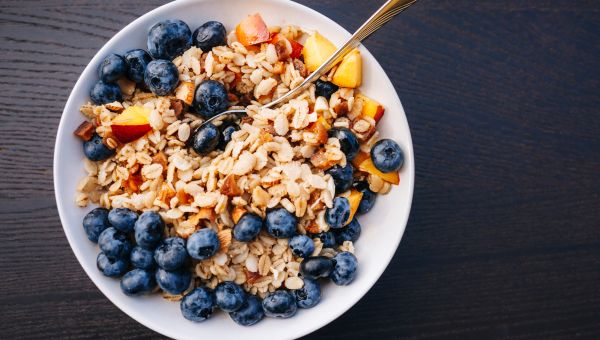
Whole grains are a key part of a healthy diet. Not only are they a good source of B vitamins, fiber, and iron, but eating them regularly is linked to a lower risk of heart disease, obesity, and type 2 diabetes.
The amount of grains your body needs depends on your age, sex, and activity level. But as a general rule, men should aim for 6 to 10 ounces per day (cooked or prepared), while the target for women is 5 to 8 daily ounces. At least half of these grains should be whole grains, like oats, brown and wild rice, barley, and bulgur. And while it’s true that most Americans eat lots of grains, they’re often processed grains found in foods like white bread, cereal, and crunchy snacks. Whole grains are frequently overlooked.
For easy and delicious ways to eat more whole grains, follow these tips from Amy Buchanan, a registered dietitian in Aiken, South Carolina.
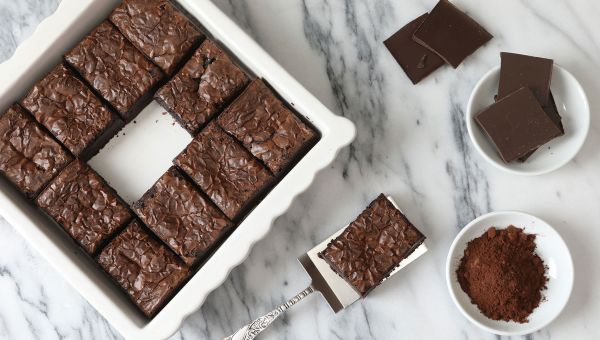
Swap whole wheat flour into baked goods
The next time you whip up a batch of brownies or bake a birthday cake, replace some of the refined white flour with an equal amount of whole-grain wheat flour. This simple substitution saves you a few calories and increases the fiber content by more than 10 grams per cup.

Stir wild rice into soups
Instead of noodles, try adding wild rice into your next soup or stew. Egg noodles may be tasty, but their nutrition is lacking. One cooked cup of wild rice contains less fat, fewer calories, and more fiber than the same serving of egg noodles.
Brown rice is another great addition to your favorite soup. Like some other grains, it contains loads of digestion- and heart-healthy fiber, protein, and manganese. Many supermarkets sell brown rice precooked and frozen, which makes adding it to your meals easy.
Pro tip: If possible, buying in bulk is a good way to make whole grains a little less expensive, Buchanan says.

Pack whole oats into hamburger patties
Hamburgers can be a quick and easy dinner option, and cooking them at home is cheaper than eating out. But there’s another benefit to building your own burgers: You can add anything you’d like!
Stick to the traditional ground beef base or opt for lower-fat ground turkey, which can save you up to 50 calories and 4 grams of fat per 4-ounce serving. Pad out the patty and add valuable nutrients by including fresh veggies or whole grains in the mix.
Pro tip: “You can add whole grains like barley, bulgur, or oats to things like meatloaf or hamburgers,” Buchanan says. “They can be used as a binding agent and it increases whole grain intake,” she adds. In general, oats can usually be added raw, but other grains should be cooked beforehand.
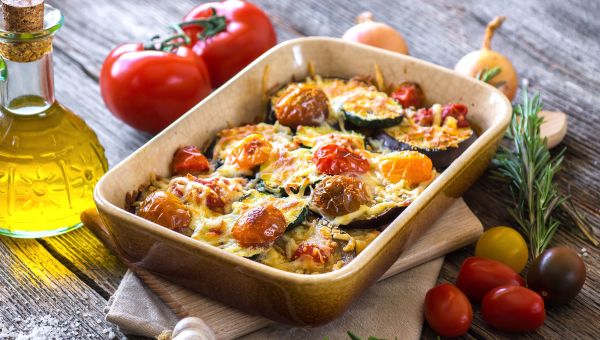
Bake barley into casseroles
Filling and easily made to fit your taste, casseroles are great side dishes or main courses. Before you pop your pan into an oven, consider tossing some cooked whole grains into the mix. Barley, for example, is loaded with fiber, protein, and minerals like iron, manganese, and selenium:
- Iron is an essential part of hemoglobin, the substance in blood cells responsible for carrying oxygen.
- Manganese promotes the health of tissue, bones, and sex hormones.
- Selenium is important for fertility and thyroid function.
Pro tip: Save time by prepping your grains in large quantities. “You can freeze cooked whole grains for up to six months and they’ll keep in the refrigerator for three to five days,” Buchanan says.
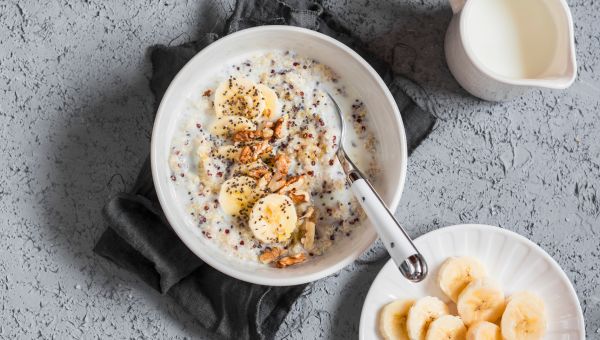
Add grains to your morning oats
Oatmeal makes a quick, filling, and inexpensive morning meal. You can add even more whole grains to your bowl by substituting a few tablespoons of traditional oats with dry quinoa before cooking. Then, simmer your grain mixture in a liquid of your choice until tender, like milk or water.
You’ll punch up your protein content, since 1 dry cup of quinoa has more than twice the protein of oats. You’ll also add texture to your breakfast. Get even more flavor and nutrients by topping your bowl with fruits, nuts, seeds, and/or cinnamon.
Pro tip: To ensure you're giving your body the nutrients it needs, try tracking your meals. Use a handy notebook or download an app and let the tracker do the work for you.
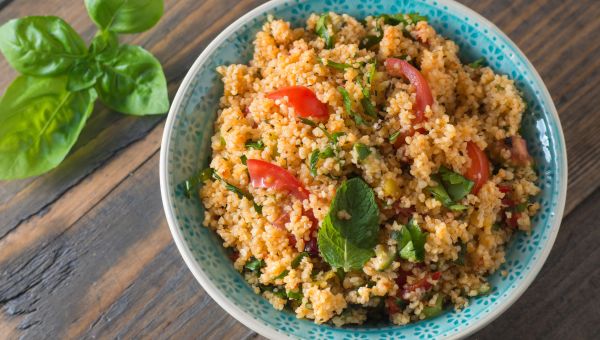
Craft spiced-up sides
Help whole grains shine in your next meal by seasoning them with spices, herbs, and other flavors. For example, season your cooking water with black pepper, cumin, curry, or a bouillon cube before pouring in your grains.
Buchanan shares her favorite way to cook grains: “I like to cook brown rice in vegetable or chicken broth to add some flavor,” she says. Most supermarkets carry a variety of broths. Just reach for the low-fat and low-sodium varieties. Making your own is inexpensive and simple to do, as well.
Pro tip: Once you’ve cooked your whole grain base, fold in veggies, fresh herbs, dried fruits, and chopped nuts to create recipes like tabbouleh or whole grain salad.
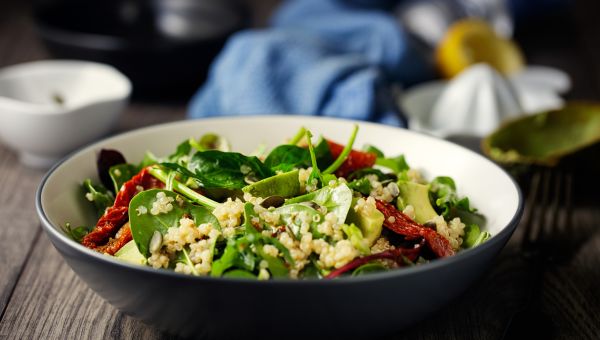
Sprinkle quinoa on salads
To add texture and flavor to your greens, add a heaping spoonful of cooked quinoa. It takes just 10 to 15 minutes to make a batch of quinoa on the stovetop, so you can cook it once and enjoy throughout the week.
Quinoa is loaded with fiber (5 grams per cup), which helps keep you feeling full, and protein (8 grams per cup). “Grains like quinoa and amaranth are considered complete proteins,” Buchanan says. “They have all the amino acids that we need.” Quinoa also contains manganese, which helps the body form tissue, and magnesium, essential for blood and bone health.
Pro tip: Give your quinoa a good rinse before cooking. This removes the bitter, but harmless, coating naturally found on the grain.

Harvard T.H. Chan School of Public Health. The Nutrition Source. Whole Grains. Accessed December 7, 2023.
Mayo Clinic. Nutrition and healthy eating. Whole grains: Hearty options for a healthy diet. December 10, 2022.
National Institute of Health. Iron. March 30, 2021. Accessed June 4, 2021.
More On


video

article

slideshow


video


video
